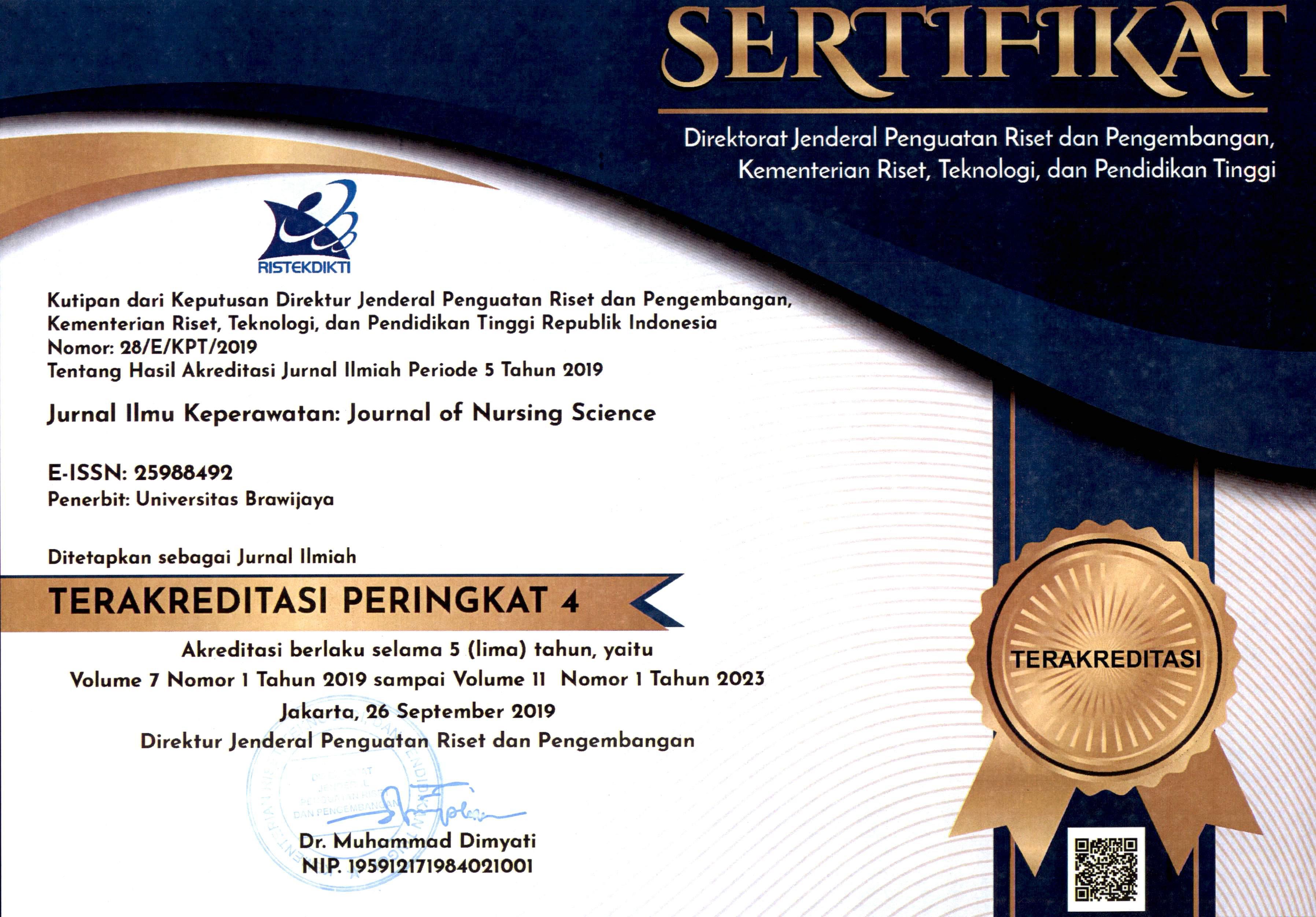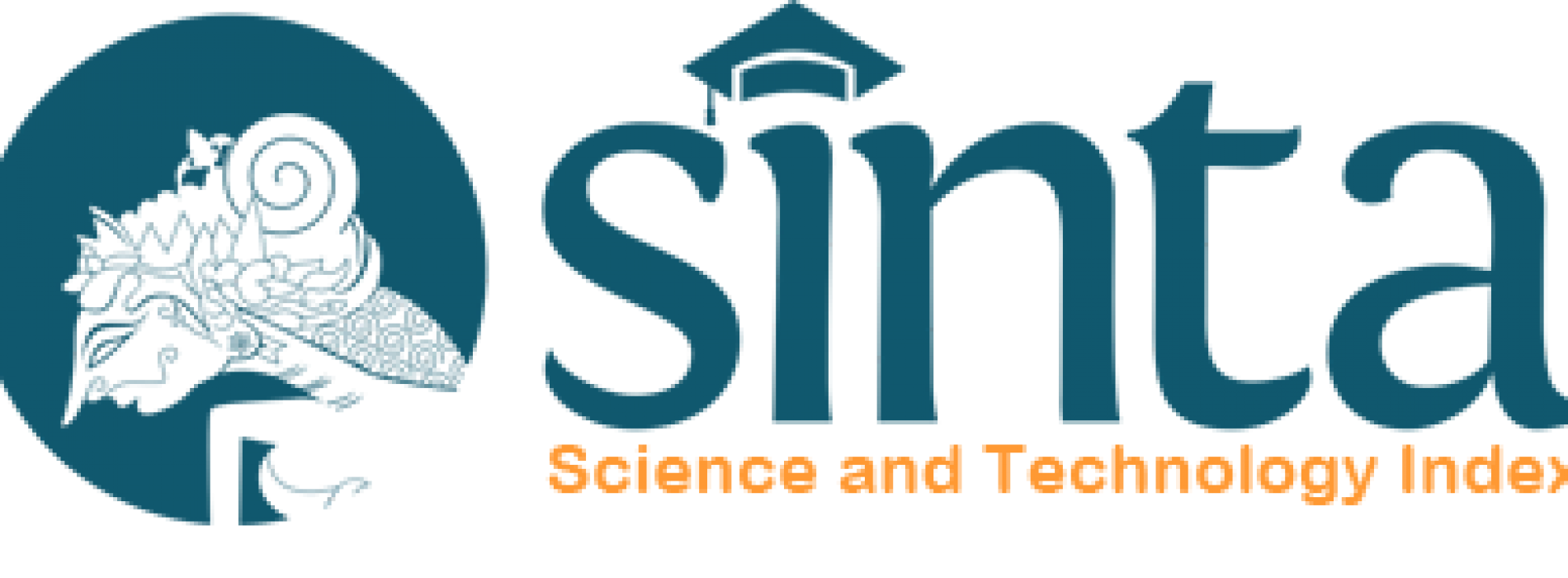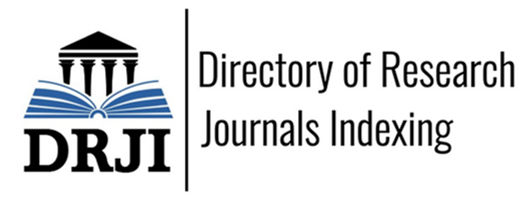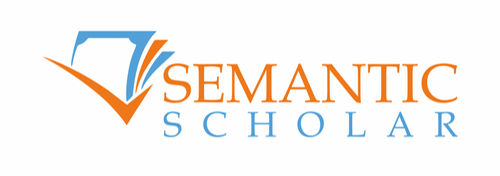AN UPDATE REVIEW: THE USE OF WET CUPPING THERAPY AGAINST VERTIGO
DOI:
https://doi.org/10.21776/ub.jik.2018.006.02.8Keywords:
Vertigo, wet cupping therapy, Persia medicineAbstract
Vertigo is one of common complaints in the primary health care in the world. The common modern therapy for vertigo is using chemical pharmacological therapy yet having unwanted side effect. One of the wellknown complementary medicine that has been proven for relieving and curing many diseases is cupping therapy, especially wet cupping therapy. However, wet cupping therapy is not commonly applied in Indonesia healthcare. The causes may be due to the scarcity of the high quality scientific sources of the cupping therapy use for vertigo as well as the boundary between complementary and modern medicine in Indonesia. This review aimed to find out the use of wet cupping therapy against vertigo. A systematic review was obtained from NCBI and Google Scholar database (1999-2017) according to topic of interest. Yet Yunani, Persia, and China medicines recommend this therapy for treating vertigo as it had high level safety and effectivity. Wet cupping therapy has a potential effect in treating vertigo which the mechanism using negative pressure from vacuum cupping thus opening the skin barrier and removing causative pathology substances (CPS). Researchers and health practitioners essentially need to improve research in large scale towards the use of wet cupping against vertigo so the effectivity will be more optimal.Â
References
- Achmad Ali Ridho. Bekam sinergi: Rahasia sinergi pengobatan Nabi, modicine modern, dan Traditional Chinese Medicine. Solo: Aqwam; 2015.
- Aghili Khorasani Shirazi MH. Moalejat e aghili. Vol. 1. Tehran, Iran: Iran University of Medical Sciences Press; 2008.
- Ai-Ping W. Research progress of acupuncture in treating cervical vertigo. J Acupunct Tuina Sci. 2004; 2:57-60.
- Al-Albani. Sahih and daeef sonan Abo Dawood, Book of medicine. Riyadh, Saudi Arabia: Dar Al-Maarif library; 2007.
- Alireza Ahmadi, David C. Schwebel, and Mansour Rezaei. The Efficacy of Wet-Cupping in the Treatment of Tension and Migraine Headache. The American Journal of Chinese Medicine. 2008; 36(1): 37– 44.
- Arzani MA. Teb-e-Akbari [Akbari’s Medicine]. Vol. 1. Qom, Iran: Jalaleddin Press; 2008.
- Avicenna. Qanoon fi al Tib [Canon of Medicine]. Vol. 3. Beirut, Lebanon: Ehyaol Toras al-Arabi Press; 2010.
- Azizkhani, M. The Efficacy of Hejamat in Treatment of Migraine (in Farsi). Tehran: The Hejamat Research Institute of Iran; 2000.
- Bird JC. An analysis of referral patterns for dizziness in the primary care setting. Br J Gen Pract. 1998; 48(437): 1828-1832.
- C. R. Gordon, R. Levite, V. Joffe, N. Gadoth, Is posttraumatic benign paroxysmal positional vertigo different from the idiopathic form? Archives of Neurology. 2004; 61(10): pp. 1590–1593.
- Chashti MA (Nazem Jahan). Exir e Azam [Great Elixir]. Vol. 1. Tehran, Iran: Research Institute for Islamic and Complementary Medicine; 2008.
- Duo, X. 100 cases of intractable migraine treated by acupuncture and cupping. J. Tradit. Chin. Med. 1999; 19: 205–206.
- El Sayed SM, Mahmoud HS, Nabo MMH. Methods of Wet Cupping Therapy (Al-Hijamah): In Light of Modern Medicine and Prophetic Medicine. Altern Integ Med. 2013; 2: 111. doi:10.4172/2327-5162.1000111
- Elolemy AT, AlBedah AMN. Public knowledge, attitude and practice of complementary and alternative medicine in Riyadh region, Saudi Arabia. Oman Med J. 2012; 27: 20e26.
- Feroz Osman-Latib. Islamic Cupping & Hijamah: A Complete Guide. South Africa: EDI Publishers; 2013.
- Gholamreza Kordafshari, Mohammad Reza Shams Ardakani, Mansoor Keshavarz, Mohammad Mehdi Esfahani, Esmaeil Nazem, Maryam Moghimi, Arman Zargaran, Hoorieh Mohammadi Kenari. The Role of Phlebotomy (Fasd) and Wet Cupping (Hijamat) to Manage Dizziness and Vertigo From the Viewpoint of Persian Medicine. Journal of Evidence-Based Complementary & Alternative Medicine. 2017; 22(3): 369-373. doi: 10.1177/2156587216672757
- H. Lee, J. H. Ban, K. C. Lee, and S. M. Kim, “Benign paroxysmal positional vertigo secondary to inner ear disease,†Otolaryngology—Head and Neck Surgery. 2010; 143(3): pp. 413–417.
- Hannelore K. Neuhauser, Andrea Radtke, Michael von Brevern, Franziska Lezius, Maria Feldmann, Thomas Lempert. Burden of dizziness and vertigo in the community. Arch Intern Med. 2008; 168(19): 2118-2124.
- Headache Classification Subcommittee of the International Headache Society. 2016. The International Classification of Headache Disorders 3rd edition (Beta version). Tersedia dari: https://www.ichd-3.org/ [Diakses 21 Desember 2017].
- Huang YL. Cupping-bloodletting therapy of Saudi Arabia and its clinical application. Zhongguo Zhen Jiu. 2008; 28: 375-377.
- Huijuan Cao, Xun Li, Jianping Liu. An Updated Review of the Efficacy of Cupping Therapy. PLoS ONE. 2012; 7(2). doi:10.1371/journal.pone.0031793
- Ishiyama, K. M. Jacobson, and R. W. Baloh. Migraine and benign positional vertigo. Annals of Otology, Rhinology and Laryngology. 2000; 109(4): pp. 377–380.
- Jorjani I. Zakhireye Kharazmshahi [Treasure of the Khwarazm Shah]. Qom, Iran: Jalaleddin Press; 2011.
- Jorjani I. Al-Aghraz al-Tebbieh va al-Mabahes al-Alayieh [Medical Pursuits]. Tehran, Iran: Tehran University Press; 2005.
- Khan JA, Siddiqui MA, Itrat M, Jamal MA. A review on therapeutic application of Fasd (venesection) in Unani medicine. J Biol Sci Opin. 2014; 2: 101-102.
- Kroenke K, Mangelsdorff AD. Common symptoms in ambulatory care: incidence, evaluation, therapy, and outcome. Am J Med. 1989; 86(3): 262-266.
- Kroenke K, Price RK. Symptoms in the community: prevalence, classification, and psychiatric comorbidity. Arch Intern Med. 1993; 153(21): 2474-2480.
- Kupiya Timbul Wahyudi. Tinjauan Pustaka: Vertigo. Cermin Dunia Kedokteran. 2012; 39(10).
- L. Pollak, R. A. Davies, and L. L. Luxon, “Effectiveness of the particle repositioning maneuver in benign paroxysmal positional vertigo with and without additional vestibular pathology,†Otology and Neurotology. 2002; 23(1): pp. 79–83.
- Laila J Salomonsen, Lasse Skovgaard, Søren la Cour, Lisbeth Nyborg, Laila Launsø, Vinjar Fønnebø. Use of complementary and alternative medicine at Norwegian and Danish hospitals. BMC Complement Altern Med. 2011; 11: 4.
- Latifi SA, Minaiee B, Kamalinejad M, Nazem E, Gooran S. Complementary treatment in chronic pelvic pain syndrome: a case report study. Iran Red Crescent Med J. 2014;16:e13681.
- Liang SY. Wet cupping therapy plus massage on treatment of 50 cases with pivot joint disturbance vertigo [in Chinese]. Fujian Journal of Traditional Chinese Medicine. 2009; 40(1): 28–29.
- Liao FR. Observations on the efficacy of pricking bloodletting plus cupping in treating cervical vertigo [in Chinese]. Shanghai Journal of Acupuncture and Moxibustion. 2009; 28: 399–400.
- M. Riga, A. Bibas, J. Xenellis, and S. Korres. Review Article: Inner Ear Disease and Benign Paroxysmal Positional Vertigo: A Critical Review of Incidence, Clinical Characteristics, and Management. Hindawi Publishing Corporation International Journal of Otolaryngology. 2011; 2011. doi:10.1155/2011/709469.
- Madlon-Kay DJ. Dizziness: state of the science. J Fam Pract. 1985; 21(2): 109-113.
- Mehrab Dashtdar, Mohammad Reza Dashtdar, Babak Dashtdar, Karima Kardi, Mohammad khabaz Shirazi. The Concept of Wind in Traditional Chinese Medicine. Journal of Pharmacopuncture. 2016; 19[4]:293-302.doi: https://doi.org/10.3831/KPI.2016.19.030N.
- Michalsen A, Bock S, Lüdtke R, Rampp T, Baecker M, Bachmann J, Langhorst J, Musial F, Dobos GJ. Effects of traditional cupping therapy in patients with carpal tunnel syndrome: A randomized controlled trial. J Pain. 2009; 10: 601-608.
- Salah Mohamed El Sayed, Abdel-Salam Al-quliti, Hany Salah Mahmoud, Hussam Baghdadi, Reham A. Maria, Manal Mohamed Helmy Nabo, Ahmad Hefny. Therapeutic Benefits of Al-hijamah: in Light of Modern Medicine and Prophetic Medicine. American Journal of Medical and Biological Research. 2014; 2(2): 46-71. doi:10.12691/ajmbr-2-2-3
- Scallan J, Huxley VH, Korthuis RJ. Capillary fluid exchange: Regulation, functions, and pathology. In: The interstitium. San Rafael (CA): Morgan & Claypool Life Sciences; 2010.
- Timothy L. Thompson, Ronald Amedee. Vertigo: A review of common peripheral and central vestibular disorders. The Ochsner Journal. 2009; 9:20–26.
- Yoon-Hee Cha. Migraine Associated Vertigo. Journal of Clinical Neurology. 2007;3.
- Zargaran A, Zarshenas MM, Karimi A, Yarmohammadi H, Borhani-Haghighi A. Management of stroke as described by Ibn Sina (Avicenna) in the Canon of Medicine. Int J Cardiol. 2013; 169: 233-237.
Downloads
Published
How to Cite
License
Authors published in this journal agree to the following terms:
1. The copyright of the received article shall be assigned to the journal as the publisher of the journal. The intended copyright includes the right to publish the article in various forms (including reprints). The journal maintains the publishing rights to the published articles.
2. Authors may enter into separate additional contractual agreements for the non-exclusive distribution of the published journal version of the work (for example, posting it to an institutional repository or publishing it in a book), with acknowledgment of their initial publication in this journal.
3. Authors are permitted and encouraged to post their work online (e.g. in an Institutional Repository or on their website) before and during the submission process, as this can result in a productive exchange, as well as earlier and larger citations of the published work.
4. Articles and all related material published are distributed under Creative Commons Attribution-NonCommercial 4.0 International License or CC BY-NC 4.0 license.
JNSU is licensed under a Creative Commons Attribution-NonCommercial 4.0 International License or CC BY-NC 4.0 license.
Most read articles by the same author(s)
- Indah Kumala Sari, Yati Sri Hayati, Nurona Azizah, Alfrina Hany, The Relationship of Self-Efficacy with Learning Discipline of Teenagers during COVID-19 Pandemic at East Kalimantan, Indonesia , Journal of Nursing Science Update (JNSU): Vol. 9 No. 2 (2021)





























